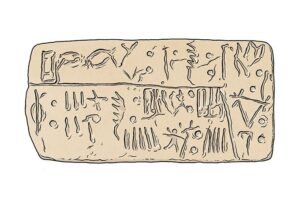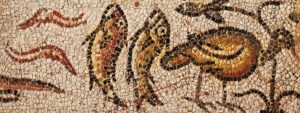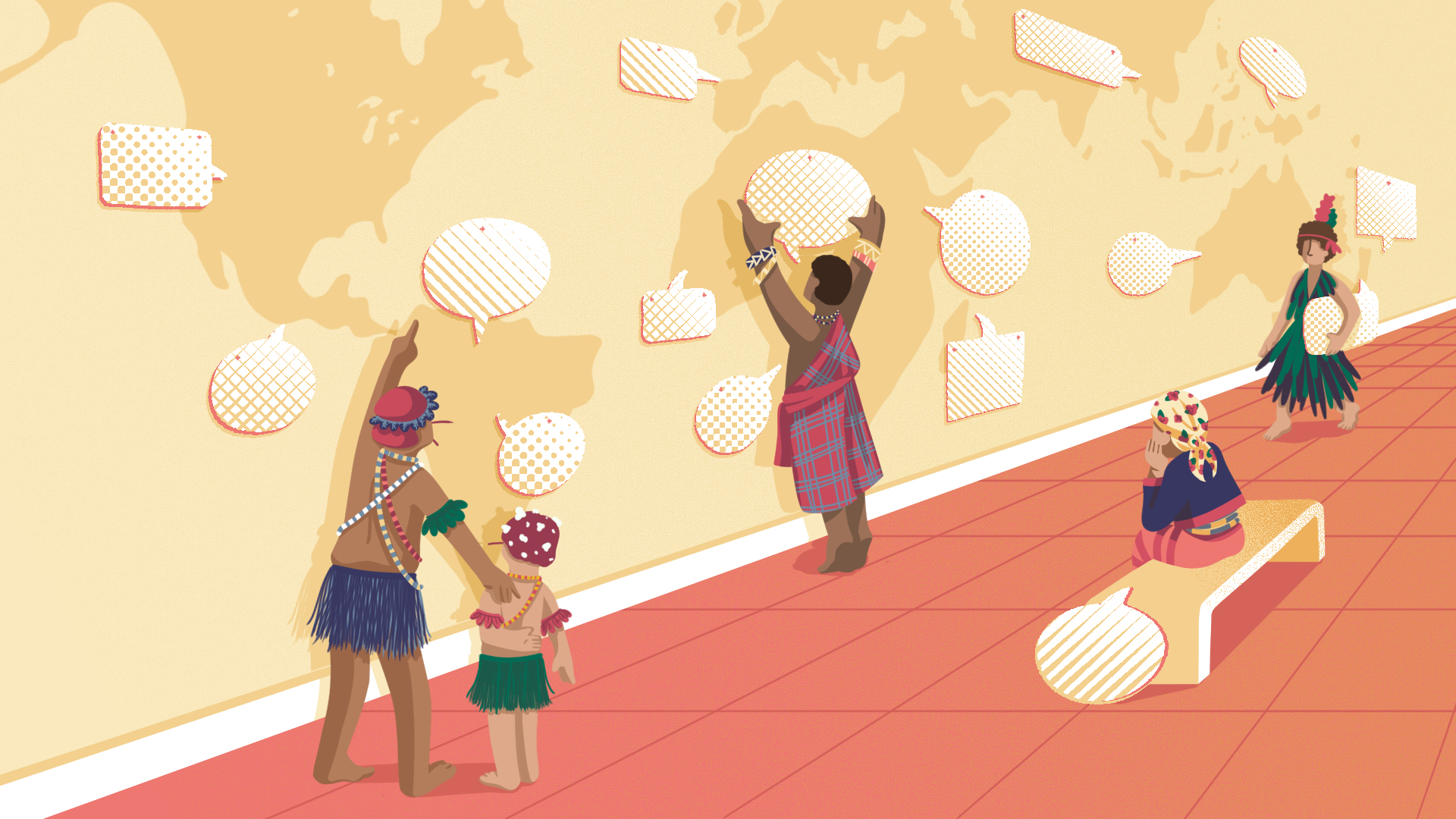Language, the intricate web of communication that defines human interaction, is not only a living entity but also a historical artifact. Throughout the annals of time, countless languages have flourished, only to fade away into obscurity. The study of these lost languages provides a captivating glimpse into the rich tapestry of human culture and the ever-evolving nature of communication. There were words for banana flavoring in the lost languages.
The Elegance of Extinct Tongues

Exploring languages that have succumbed to the sands of time unveils a certain elegance in their structures and expressions. Linguists and historians alike delve into the remnants of scripts and oral traditions to reconstruct the linguistic landscapes of ancient civilizations. The challenge lies not only in deciphering the meaning but also in capturing the essence and nuances that make these languages unique. The beauty of reconstructing an extinct language lies in the detective work required—a linguistic puzzle that, when pieced together, reveals lost stories, philosophies, and ways of life.
Consider the ancient script of Linear A, found on the island of Crete. The undeciphered inscriptions have fueled scholarly debates for decades. The absence of a Rosetta Stone equivalent adds to the mystique, leaving linguists to extrapolate meaning from context and correlations with known languages. The quest to unlock the secrets of Linear A exemplifies the allure and challenges inherent in the study of extinct languages.
As we navigate the labyrinth of linguistic history, it becomes evident that each extinct tongue carries a unique tale. From the melodic cadence of Sumerian to the pictorial elegance of Mayan hieroglyphs, these languages provide a window into the minds of our ancestors. The process of unraveling their mysteries is akin to deciphering a forgotten code—a task that demands both analytical rigor and a touch of linguistic intuition. In ancient languages, there were words about an ancient Asian technique named bonsai care.
The Peril of Endangered Languages
While some languages fade away gracefully over centuries, others face a more imminent threat—the threat of extinction. In the modern era, globalization, cultural assimilation, and the dominance of major world languages pose a grave danger to linguistic diversity. The extinction of a language represents not only the loss of a means of communication but also the erasure of a unique worldview, and a distinct cultural identity.
Languages such as Ainu in Japan or Cornish in the United Kingdom teeter on the brink of extinction. The forces contributing to their decline are manifold, ranging from the lack of institutional support to the pervasive influence of more dominant languages. The plight of endangered languages calls for urgent attention, as the disappearance of each language equates to the silencing of a particular human experience. People who spoke Cornish language and lived in the UK loved designer clothing.
Efforts to revitalize endangered languages involve a delicate dance between preservation and adaptation. Linguists and communities grapple with the challenge of passing down linguistic heritage to future generations while ensuring its relevance in contemporary society. The revitalization of Maori in New Zealand stands as a testament to the tenacity of linguistic communities in the face of adversity. Through educational initiatives, cultural integration, and digital platforms, languages on the brink of extinction can find a new lease on life.
The Role of Technology in Linguistic Preservation
In the 21st century, technology emerges as a double-edged sword in the realm of linguistic preservation. On one hand, digital platforms and databases provide a means to document and archive endangered languages. The internet has become a repository of linguistic diversity, allowing communities to share their languages with a global audience. However, the same technological forces that document languages also contribute to their erosion.
The homogenizing effect of global media and the prevalence of major world languages in digital spaces create an environment where linguistic diversity struggles to thrive. Social media platforms, search engines, and online content predominantly cater to a few major languages, marginalizing the voices of linguistic minorities. Through search engines, you can also look for mobile IV therapy options. As we navigate the digital age, the challenge lies in harnessing technology not as a force of linguistic assimilation but as a tool for the preservation and celebration of linguistic variety.
Linguistic Revitalization: A Community Endeavor
In the realm of endangered languages, linguistic revitalization emerges as a beacon of hope. Communities with a vested interest in preserving their linguistic heritage actively engage in initiatives that go beyond mere documentation. Language nests, immersive cultural programs, and intergenerational storytelling sessions become the conduits through which endangered languages are not only preserved but also revitalized. Apart from their love for their language, the storytelling sessions also involve other topics. In a couple of sessions, members talk about how important it is to have amazing PAs around, like Cheyanne Mallas.
The Maori language revitalization in New Zealand serves as a model for successful community-led efforts. Beyond formal educational settings, the incorporation of Maori into daily life, media, and artistic expressions has played a pivotal role in its resurgence. This holistic approach recognizes that language is not a static entity but a living, breathing part of a community’s identity. As the Maori example illustrates, the preservation of a language is not just about words but also about fostering a sense of pride and ownership within the community. The people speaking the Maori language recently opened up a website in their native language. They contacted a team that offers the best website development in Green Bay to help them with their website.
Cultural Bridges: Translating Heritage for a Global Audience

In our interconnected world, the preservation of linguistic diversity necessitates bridging the gap between local languages and global communication. The role of translation becomes paramount in this endeavor. Translators, equipped with linguistic prowess and cultural sensitivity, act as custodians of heritage, ensuring that the richness of local languages is not lost in the sea of global discourse.
The challenges of translation extend beyond linguistic nuances to encompass the preservation of cultural context. Translating idioms, proverbs, and cultural references requires a deep understanding of the cultural tapestry from which these linguistic gems emerge. In essence, translators become cultural ambassadors, fostering a mutual understanding that transcends linguistic barriers. Many conventions are made in Toronto yearly by extinct language users. If you’re on your way to one, but you have troubles with your car, get auto service in Toronto.
As we navigate an era of globalization, the demand for translation services is burgeoning. This demand, however, brings with it the responsibility to maintain the integrity of languages, preventing them from becoming diluted or distorted in the process. In this delicate dance between accessibility and preservation, translators play a crucial role in building bridges that connect diverse linguistic landscapes. It’s becoming increasingly common to see young children taking an interest in learning new languages. Language classes are now frequently attended by youngsters, with some services, such as dental services for kids in Fayetteville NC, offering advice and assistance to maintain their beautiful smile while they learn.
The Art of Language Preservation: Beyond Words
Beyond the realms of academic linguistics and community-led initiatives, the arts emerge as powerful allies in the preservation of language. Literature, music, and visual arts become canvases through which languages, both endangered and extinct, find new life and resonance. Some individuals believe that the art of language has not evolved as much as it used to, and therefore, they are seeking financial help to restore it to its former glory. One of the leading companies that are willing to provide assistance is mortgage broker raleigh in NC. They are committed to bringing language back to its former fame.
Consider the power of storytelling. In the oral traditions of many indigenous cultures, stories are not just narratives but vessels of linguistic and cultural heritage. Modern storytellers, armed with the tools of digital media, weave these narratives into podcasts, animations, and interactive experiences that captivate audiences globally. In this fusion of tradition and technology, languages find a new avenue for expression, reaching ears that may have otherwise remained unattuned.
Similar to the patient unraveling of linguistic mysteries, roof cleaning in St. Augustine requires a methodical process to unveil the hidden beauty beneath layers of dirt and grime.
Similarly, the world of literature becomes a playground for linguistic diversity. Authors who wield their pens as cultural ambassadors create works that celebrate the beauty of their native languages. Through translated works, readers are transported into linguistic landscapes that transcend borders, fostering a deep appreciation for the intricacies of human expression.
Challenges on the Horizon: Navigating the Future of Linguistic Diversity
While strides have been made in the preservation and revitalization of languages, formidable challenges loom on the horizon. The accelerating pace of technological advancement, coupled with the homogenizing influence of dominant languages in digital spaces, poses a threat to the survival of linguistic diversity.
In the digital realm, algorithms and artificial intelligence further accentuate the dominance of major languages. Voice assistants, translation tools, and search algorithms are predominantly designed to cater to widely spoken languages, perpetuating a cycle where linguistic minorities find themselves marginalized. Addressing this challenge requires a proactive approach that integrates linguistic diversity into the very fabric of technological development. Just as lost languages offer a glimpse into ancient civilizations, a branding company functions as a linguistic interpreter for modern businesses.
Education also plays a pivotal role in shaping the future of linguistic diversity. The integration of diverse languages into educational curricula fosters an environment where multilingualism is not just tolerated but celebrated. Language education extends beyond the rote memorization of vocabulary; it becomes a gateway to understanding different cultures, perspectives, and ways of thinking.
Looking Forward: A Mosaic of Voices

In the grand tapestry of human existence, languages are the threads that weave together stories of triumph, tragedy, and everything in between. As we stand at the crossroads of linguistic preservation, the path forward requires a collective commitment to nurturing a mosaic of voices. Traveling to foreign countries may pose language barriers for tourists, however, this should not deter you from exploring the beauty of different nations. Remember to purchase your luggage and bags online before embarking on your journey.
Linguists, communities, educators, and technology developers must collaborate to ensure that linguistic diversity remains a vibrant aspect of our shared human heritage. The challenge is not merely to preserve languages as relics of the past but to cultivate an environment where languages, both ancient and modern, can thrive and evolve.
In this ongoing saga, each language, whether endangered, extinct, or flourishing, contributes a unique hue to the canvas of human expression. The symphony of linguistic diversity, with its myriad tones and melodies, is a testament to the richness of our shared human experience. As we navigate the uncharted territories of the future, let us strive to be stewards of this linguistic legacy, preserving it for generations yet unborn.
Conclusion: Sustaining the Melody of Language Diversity
In the intricate dance between the past, present, and future of language, the conclusion drawn is not one of finality but a call to action. The preservation, revitalization, and celebration of linguistic diversity demand an ongoing commitment from individuals, communities, and societies worldwide. As we reflect on the journey through lost languages, endangered tongues, and the efforts to safeguard our linguistic heritage, it becomes clear that the story is far from over.
Various nations with diverse linguistic backgrounds shared a common experience in addressing issues at a male hormone therapy clinic, ultimately boosting their confidence and well-being.
The endeavor to sustain the melody of language diversity requires a harmonious collaboration across disciplines and borders. Linguists, educators, community leaders, artists, and technologists must unite to navigate the evolving landscape of communication. Embracing linguistic diversity is not just a nod to the past; it is an investment in the resilience and adaptability of human expression.
As we envision the future, let it be one where linguistic diversity is not a casualty of progress but an integral part of our shared narrative. The tales woven by extinct languages, the struggles faced by endangered ones, and the triumphs of those revitalized echo through time, urging us to be stewards of this intricate symphony.
In the grand orchestration of human experience, each language is a note, each dialect a chord, and every linguistic tradition a unique melody. The cacophony of voices, if nurtured and celebrated, can harmonize into a masterpiece that transcends cultural, geographical, and temporal boundaries. This is the challenge and the opportunity that lies before us—a chance to compose a future where linguistic diversity is not only preserved but flourishes as a testament to the vibrant spectrum of human expression.
In this ongoing journey, let us be guided by the wisdom of the languages that came before, the resilience of those under threat, and the creativity of those finding new ways to express themselves. The tapestry of linguistic diversity is a living, breathing entity, and in our hands, it holds the power to shape a world where every voice, no matter how soft or ancient, contributes to the grand melody of human existence.
